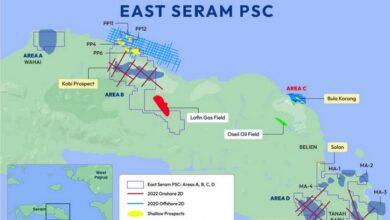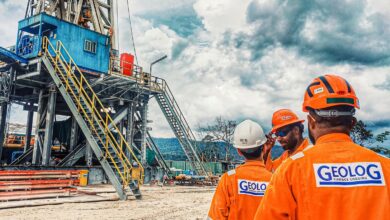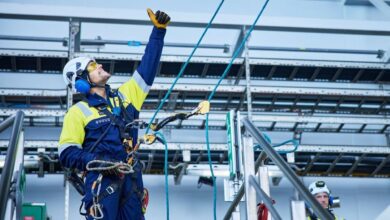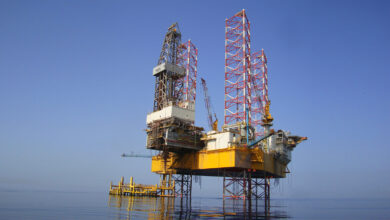BSEE finalizes improved Blowout Preventer and Well Control Regulations
The US Department of the Interior’s Bureau of Safety and Environmental Enforcement (BSEE) released the final improved Blowout Preventer Systems and Well Control regulations. BSEE’s final Well Control Rule – as the regulation is commonly known – removes unnecessary regulatory burdens to responsible offshore development while maintaining safety and environmental protection. The revised rule reflects the Trump Administration’s focus on smarter regulations that provide regulatory certainty, signal American competitiveness, advance energy security, and sustain economic prosperity while promoting safety.
“Today’s final rule puts safety first, both public and environmental safety, in a common sense way,” said US Secretary of the Interior David Bernhardt. “Incorporating the best available science, best practices and technological innovations of the past decade, the rule eliminates unnecessary regulatory burdens while maintaining safety and environmental protection offshore. Under President Trump’s leadership, America is a leader on energy resulting in greater security and economic prosperity.”
“BSEE’s review has been thorough, careful, and tailored,” said BSEE Director Scott Angelle. “Free of undue regulatory burden while ensuring that operators conduct outer Continental Shelf activities in a safe and environmentally responsible manner, today’s rule will fuel and sustain responsible energy exploration and production of America’s outer Continental Shelf.”
In response, IADC President Jason McFarland released a statement regarding the finalized improvements:
“This latest refinement of BSEE’s well control regulations, first introduced in July 2016, provide the necessary framework upon which evolving technology and performance-oriented best practices can be leveraged to sustain the safety and productivity of offshore oil and gas operations. BSEE’s technical experts were particularly focused on only the most necessary enhancements to the originally drafted rule, and as such determined that only 71 of the original 342 provisions required adjustment. The Bureau’s approach ensured that 80% of the original provisions remain unchanged. The changes that are included in today’s Final Rule, reflect a common-sense approach to regulation and does nothing to decrease safety. Most importantly, it further optimizes technology and innovation to the greater benefit of effective and safe offshore operations.”
Sixty-eight provisions were identified as appropriate for revision, and 33 provisions were added to improve operations on the OCS. Following the direction of both Executive Order 13795 and Secretary’s Order 3350, the final rule addresses offshore oil and gas drilling, completions, workovers, and decommissioning activities.
Furthermore, BSEE considered all 424 recommendations arising from 26 separate reports from 14 different organizations developed in the wake of and in response to the Deepwater Horizon and found that none of the revisions contravened any of these recommendations (see Listing of Reports).
The improvements to requirements for Blowout Preventer (BOP) design and testing include:
- Limiting the number of connection points to the BOP, reducing the number of potential failure points;
- Equipping each BOP with a high-flow receptacle to ensure faster delivery of fluid to perform the function from a Remotely Operated Vehicle (ROV);
- Requiring an array of rams, which are steel covers designed to close rapidly around and over a drill pipe to stop the flow of hydrocarbons, with specific capabilities, allowing the most effective use of each ram type and maximizing functionality; and
- Improving the expected lifespan of a critical BOP component by specifying a testing methodology that provides a readiness check without putting unnecessary wear and tear on the component.
Background
BSEE published proposed revisions to the Well Control Rule on May 11, 2018, opening a 60-day public comment period that was later extended to 87 days. During the open comment period, BSEE received over 118,000 comments on the proposed rule. BSEE carefully reviewed and considered these comments prior to finalizing the 2019 Well Control Rule.
Publication in the Federal Register is forthcoming. A pre-publication version and additional information can be found here.
Listing of Reports:
- DOI Report to the President
- Increased Safety Measures for Energy Development on the OCS (May 10, 2010)
- DOI OCS Safety Oversight Board
- Report to Secretary of the Interior Ken Salazar (Sept. 2010)
- National Commission on the BP Deepwater Horizon Oil Spill and Offshore Drilling
- Deep Water – The Gulf Oil Disaster and the Future of Offshore Drilling (Jan. 2011)
- DOI/DHS Deepwater Horizon Joint Investigation Team
- Report of Investigation (Sept. 14, 2011)
- Chief Counsel for the National Commission
- Macondo – The Gulf Oil Disaster (2011)
- National Academy of Engineering
- Analysis of Causes of Deepwater Horizon Explosion, Fire, and Oil Spill to Identify Measures to Prevent Similar Accidents in the Future (Dec. 14, 2011)
- Joint Industry Subsea Well Control and Containment Task Force
- Final Report on Industry Recommendations to Improve Subsea Well Control and Containment (March 13, 2012)
- Environmental Law Institute
- Strategic Planning for BSEE’s Enforcement Program (2012)
- Ocean Energy Safety Advisory Committee
- Committee Recommendations (April 2011)
- Committee Recommendations (May 2012)
- Committee Recommendations (October 2012)
- Committee Recommendations (January 2013)
- Chemical Safety Board Investigation
- Investigation Report: Drilling Rig Explosion and Fire at the Macondo Well (April 12, 2016)
- Joint Industry Oil Spill Preparedness and Response Task Force
- Draft Industry Recommendations to Improve Oil Spill Preparedness and Response (2010)
- Transportation Research Board
- Report 309: Evaluating the Effectiveness of Offshore Safety and Environmental Management Systems (2012)
- Government Accountability Office
- Interior Has Begun to Address Hiring and Retention Challenges Needs to Do More (2014)
- Interior Has Strengthened Its Oversight of Subsea Well Containment, but Should Improve Its Documentation (2012)
- Interior Has Taken Steps to Address Staff Hiring, Retention, & Training but Needs a More Evaluative & Collaborative Approach (2016)
- Interior’s BSEE Restructuring Has Not Addressed Long-standing Oversight Deficiencies (2016)
- Stronger Leadership Commitment Needed at Interior to Improve Offshore Oversight and Internal Management (2017)
- Oil Dispersants: Additional Research Needed, Particularly on Subsurface and Arctic Applications (2012)
- Interior’s Reorganization Complete, but Challenges Remain in Implementing New Requirements (2012)
- DOI Office of Inspector General
- Incident Investigation Program (2015)
- Management Advisory – Ongoing Concerns with Realignment Planning for the Bureau of Safety and Environmental Enforcement (2015)
- Offshore Oil and Gas Permitting (2014)
- A New Horizon: Looking to the Future of the Bureau of Ocean Energy Management, Regulation and Enforcement (2010)




